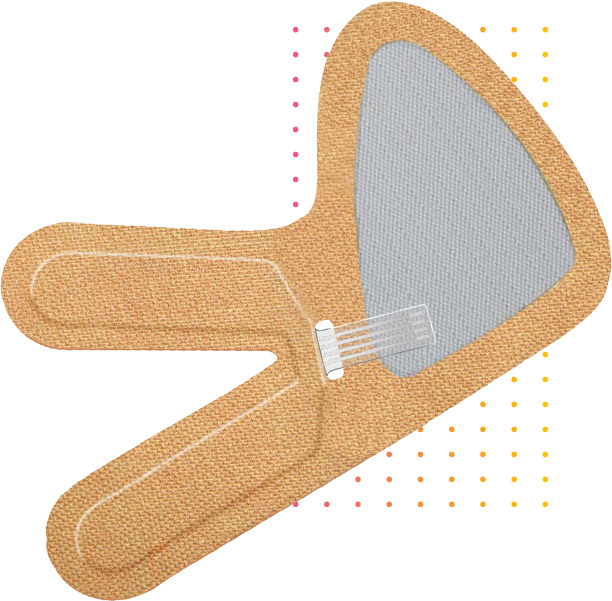RespiraSense transforms the measurement of a patient’s Respiratory Rate with continuous, innovative, technology monitoring – improving the measurement and identification of deterioration, in a real-time manner to help save lives.
Accurate, real time, critical respiratory rate data.
by #MakingEveryBreathCount
RespiraSense transforms the measurement of a patient’s Respiratory Rate with continuous, innovative, technology monitoring – improving the measurement and identification of deterioration, in a real-time manner to help save lives.
Welcome to PMD Solutions
Manual Respiration Rate measurements across six hospitals were recorded with a significant proportion of measurements at either 18 and 20 breaths per minute
Find Out More...of early warning scores inaccurately weight the patient’s risk of deterioration. The incidence of respiratory compromised post admission COPD patients is (12%); Pneumonia (22%), Sepsis (27%) and Post-Op (1%)[2] [6]
Find Out MoreTrends in RR can indicate Hypoxia 12 hours earlier
RespiraSense Continuous Respiratory Rate Monitoring gives medical professionals the confidence to know that future escalations in care can be prevented due to the continuous and non-invasive monitoring of patients’ respiratory rate while maintaining minimal patient contact.
The RespiraSense sensor is an innovative, discrete wearable device ideally designed for COVID-19 patients who are at risk of adverse events. RespiraSense can monitor symptoms of COVID-19 such as shortness of breath and breathing difficulties. The remote monitoring of patients respiratory rate allows medical professionals to develop more accurate early warning scores all the while protecting hospital staff, allowing minimal contact, saving on PPE.
Pneumonia is inflammation of the lungs, usually caused by an infection in lower respiratory tract. Respiratory techniques are commonly used to aid airway clearance and improve the rate of breathing. By using RespiraSense Continuous Respiratory Rate Monitoring allows medical professionals the confidence to know their patients progress. Any escalations in care can be prevented due to the continuous and non-invasive monitoring of the patients breathing preventing respiratory failure.
Chronic Obstructive Pulmonary Disease (COPD) is the name of lung diseases including chronic bronchitis, emphysema and chronic obstructive airways disease where patients experience breathing difficulties. If a patient has COPD, the airways of their lungs become inflamed and narrowed. COPD is one of the most common causes of hospitalisation. As air sacs become permanently damaged, it will become increasingly difficult to breathe in and out.
By using RespiraSense Continuous Respiratory Rate Monitoring allows medical professionals the confidence to know their patients progress. Any escalations in care can be prevented due to the continuous and non-invasive monitoring of the patients breathing preventing respiratory failure.
Surgical procedures involving general or epidural anaesthetic can affect the patients breathing. Respiratory depression or failure can occur after a surgical procedure[5]., with RespiraSense’s continuous and motion tolerant monitoring of respiratory rate (cRR) can trigger timely and meaningful interventions 12 hours before the deterioration event
Accurate, real-time critical respiratory rate data
Sepsis is associated with 1 in 5 deaths globally. Lower respiratory infection is the most common underlying cause of sepsis-related complications and death.
In 2017, 48.9 million cases of sepsis in 2017 and 11.0 million deaths. Two of every three cases occurred in patients with an underlying infectious condition; the remaining cases occurred in individuals with underlying injures or non-communicable diseases[4].
Virtual Ward - Fully managed service
Virtual wards are a transformational way to improve patient flow and release acute capacity for Emergency and Elective pressures.
Testimonials
"This kind of innovation fits perfectly with our aspiration to be one of the leading digital hospitals in Europe"
"It has been particularly useful during this time as we are the dedicated Covid pre and post ITU ward caring for very sick respiratory patients requiring non-invasive ventilation."
"Remote respiratory monitoring can only enhance nursing practice"
PMD’s novel sensor technology enables medical professionals to provide better patient care. The sensor directly measures the repetitive mechanical displacement of the chest and abdomen during breathing.
Continuous Monitoring of Respiratory Rate ensures early deterioration from Sepsis
Provides confidence that escalations to ICU can be prevented
Improves patient care and clinical outcomes with more accurate early warning scores
